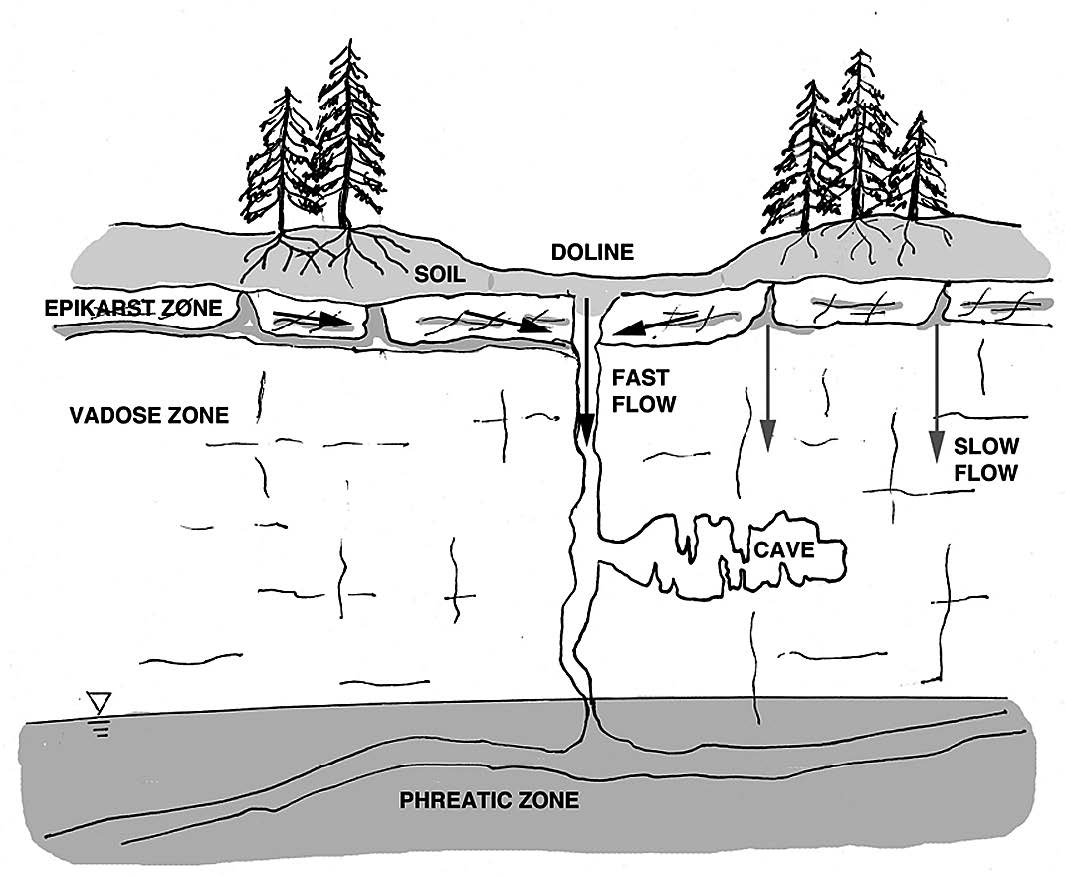Physical Structure of the Epikarst
DOI:
https://doi.org/10.3986/ac.v42i2-3.672Keywords:
epikarst, recharge, vadose zone, karstAbstract
Epikarst is a weathered zone of enhanced porosity on or near the surface or at the soil/bedrock contact of many karst landscapes. The epikarst is essentially the upper boundary of a karst system but is also a reaction chamber where many organics accumulate and react with the percolating water. The epikarst stores and directs percolating recharge waters to the underlying karst aquifers. Epikarst permeability decreases with depth below the surface. The epikarst may function as a perched aquifer with a saturated zone that transmits water laterally for some distance until it drains slowly through fractures or rapidly at shaft drains or dolines. Stress-release and physical weathering as well as chemical dissolution play a role in epikarst development. Epikarst may be found on freshly exposed carbonates although epikarst that develops below a soil cover should form at a faster rate due to increased carbon dioxide produced by vegetation. The accumulation of soil within the fractures may create plugs that retard the downward movement of percolating water and creates a reservoir rich in organic material. The thickness of the epikarst zone typically ranges from a few meters to 15 meters, but vertical weathering of joints may be much deeper and lead to a “stone forest” type of landscape. Some dolines are hydrologically connected directly to the epikarst while other dolines may drain more directly to the deeper conduit aquifer and represent a “hole” in the epikarst. Water stored in the epikarst may be lost to evapotranspiration, move rapidly down vertical shafts or larger joints, or drain out slowly through the soil infillings and small fractures. Much of the water pushed from the epikarst during storms is older water from storage that is displaced by the new event water.
Keywords: epikarst, recharge, vadose zone, karst.
Downloads

Downloads
Published
How to Cite
Issue
Section
License
Authors guarantee that the work is their own original creation and does not infringe any statutory or common-law copyright or any proprietary right of any third party. In case of claims by third parties, authors commit their self to defend the interests of the publisher, and shall cover any potential costs.
More in: Submission chapter




